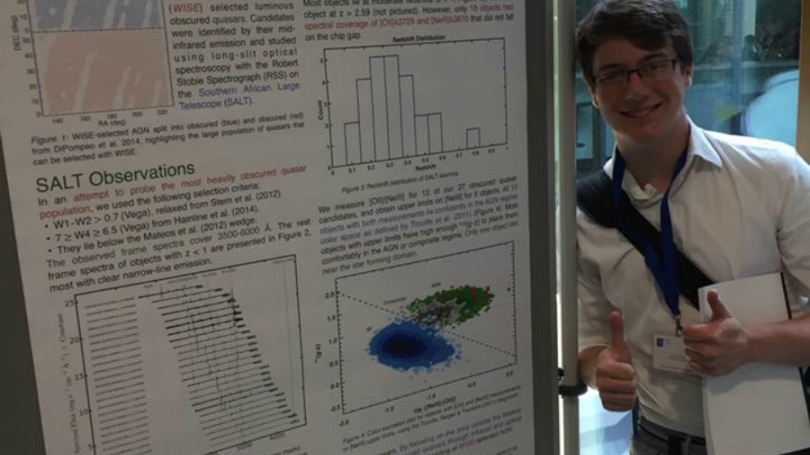
- Public Policy
- Leadership
- Funding
- News & Events
- About the Center
Back to Top Nav
Back to Top Nav
Back to Top Nav
Back to Top Nav
The “Active Galactic Nucleus: What’s in a name?” Conference was an extremely valuable experience. Being immersed in frontier science for an entire week served as just as much of a challenge as regular class, with the added excitement that much of what I was learning had never been known before. This was only enhanced by the fact that I could then go on to have one on one interactions with many of these brilliant minds to delve deeper into their experience in the field. The amount to which they would express their knowledge and enthusiasm for AGN is a testament to their vast experience in astronomy. From them I learned about theories and extragalactic ideas I had never even heard about, much less understood. I watched them tear down these very same theories in discussions with dozens of scientists, an immense collaboration in an effort to bore down to the physical truth present at the center of the galaxies in our universe. It was, with no understatement, watching science happen. It felt like watching Thompson, Rutherford, and Bohr argue about their models of the atom, except without the hindsight of history there was no way to know who is more right than the others. During the course of this conference I witnessed the giants Newton speaks of, whose shoulders carry myself and other astronomers towards the ever growing expanse of the unknown.
A few highlights of the conference follow. It was fascinating to hear about the resolution to the Carbon-IV problem, which likely lead to an overestimation of SMBH masses across the entire distribution in the past. This has obvious implications for determining the average eddington fraction at which these objects are accreting. This may force us to re-evaluate all of our accretion models if we are really experiencing what could be up to double radiative efficiency. One of the most impressive talks focused on the use of the Kepler Space Telescope to use variability to select AGN. Even though Kepler is now restricted to the ecliptic due to a well publicized reaction wheel malfunction, its impressive sensitivity and cadence make it an unexpectedly fantastic instrument for selecting quasars. Finally, it was astounding at the large amounts of data that are now contradicting the torus model, especially in the form of infrared emission in the nuclear emission above and below the accretion plane, suggesting that material is not distributed as evenly as we have been assuming. In the mini-grant application, you were asked how you plan to share what you have learned with others on campus. Please explain how and when you shared what you learned with others on campus.
To share my experience with other students on campus I will strive to stress the importance of discussion with other academics and peers to constantly move towards refining the scientific process. Something that was impressed upon me was the push towards discussion and constructive feedback over the course of the entire conference. Even during presentations, researches would admit they had hit a roadblock, or that they were unsure what to make of their results, and encouraged the room at large to approach them with any and all ideas, or for general discussion. It was incredibly refreshing to realize what a healthy attitude the astronomers had towards their field, valuing collaboration and good science fundamentals over being the first to publish or having the newest most novel idea. The STEM fields undoubtedly have a precedent presenting yourself as an intellectual superior, as there is undoubtedly a correct (and discoverable) answer. Taking after the example of the astronomers at the AGN: What’s in a name? Conference, I hope to spread this same scientific ethic to my peers.
Raphael Hviding '18, Rockefeller Mini-Grant Recipient
The Rockefeller Center's Mini-Grants program funds registration fees for students attending conferences, as well as the costs of bringing guest speakers to Dartmouth. The views and opinions expressed here are the author’s own and do not necessarily represent the views and opinions of the Rockefeller Center or constitute an endorsement by the Center.